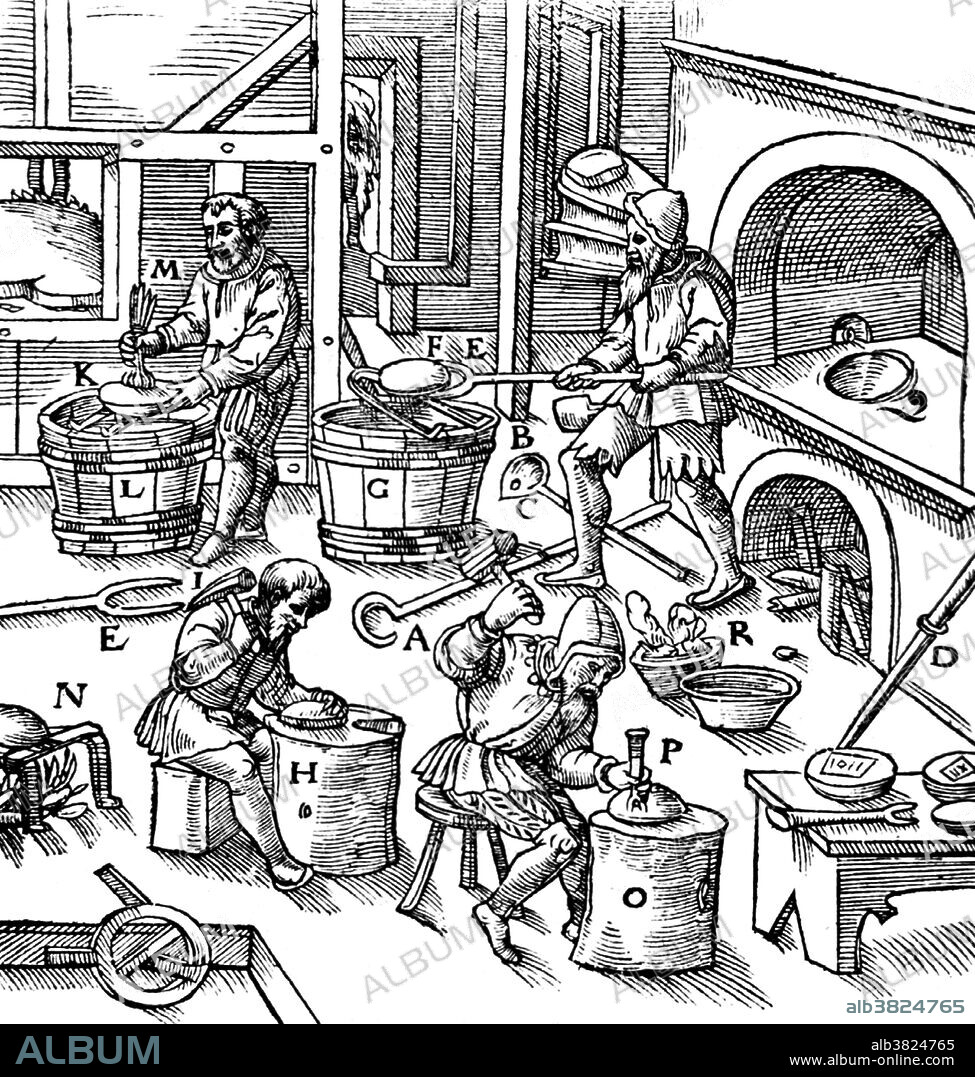alb3824765
De Re Metallica, Metallurgy Workshop, 16th Century

|
Add to another lightbox |
|
Add to another lightbox |



Title:
De Re Metallica, Metallurgy Workshop, 16th Century
Caption:
Woodcut from Georgius Agricola's De Re Metallica. Interior view of a workshop showing four men at various stages of the metallurgical process. Georgius Agricola (1494-1555) was a German scholar and scientist. Known as "the father of mineralogy". He is best known for his book De Re Metallica, published in 1556, a treatise on mining and extractive metallurgy, illustrated with woodcuts illustrating processes to extract ores from the ground and metal from the ore, and the man uses of water mills in mining. Agricola described and illustrated how ore veins occur in and on the ground, making the work an early contribution to the developing science of geology. He described prospecting for ore veins and surveying in great detail, as well as washing the ores to collect the heavier valuable minerals, such as gold and tin. It was also an important chemistry text for the period and is significant in the history of chemistry. De re metallica is considered a classic document of Renaissance metallurgy, unsurpassed for two centuries.
Credit:
Album / NLM/Science Source
Releases:
Model: No - Property: No
Rights questions?
Rights questions?
Image size:
3150 x 3307 px | 29.8 MB
Print size:
26.7 x 28.0 cm | 10.5 x 11.0 in (300 dpi)
Keywords:
1449 • 1555 • 1556 • 16 16TH XVI XVITH SIXTEENTH CENTURY • 16TH CENTURY • ART • ARTWORK • ASSAYERS • BW • CELEBRITY • CHEMISTRY • CLASSIC DOCUMENT • DE RE METALLICA • DRAWING • EUROPEA • EUROPEAN • FAMOUS • FATHER OF MINERALOGY • FIGURE • G. AGRICOLA • G. BAUER • G. PAWER • GEOLOGY • GEORG BAUER • GEORG PAWER • GEORGIUS AGRICOLA • GERMAN • GERMANS • HISTORIC • HISTORICAL • HISTORY • ILLUSTRATION • IMPORTANT • MALE • MAN • MEN • METALLURGICAL PROCESS • METALLURGY • MINING • NOTABLE • ON THE NATURE OF METALS • ON THE NATURE OF MINERALS • PEOPLE • PERSON • PERSONALITIES • PERSONALITY • RENAISSANCE • SCHOLAR • SCIENCE • SCIENTIST • WELL-KNOWN • WOODBLOCK • WOODCUT • XYLOGRAPHY
 Pinterest
Pinterest Twitter
Twitter Facebook
Facebook Copy link
Copy link Email
Email

